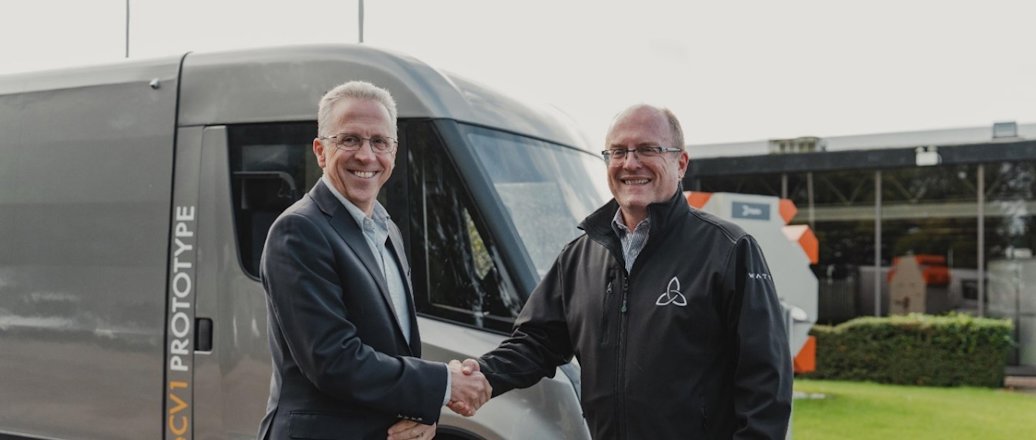The eCV1 is an electric, light commercial vehicle. Seven different aluminium extrusions will be going into WEVC’s patented electric vehicle connection system, reducing the vehicle weight significantly.
Production of the vehicle is planned to start in 2025 and the vehicle will be the first in its category to exclusively use recycled, low-carbon aluminium in its chassis. This will result in a vehicle with an embedded carbon footprint that is 50 percent lower than the competition.
“Hydro partners with innovative, forward leaning companies to help them achieve their goals. In addition to the functional aspects of the extrusions we will deliver to WEVC, the parts will reduce the embedded carbon footprint of the vehicle significantly thanks to the recycled, low-carbon aluminium we can deliver from our plant in Tibshelf, UK,” says Paul Warton, Executive Vice President of Hydro Extrusions.
WEVC will be supplied from Hydro Tibshelf, where Hydro is recycling aluminium and casting low-carbon extrusion billets. The recycled, low-carbon aluminium that will be used in the eCV1 contains a minimum of 35 percent post-consumer aluminium scrap and has a carbon footprint of 4.0 kg CO2 per kg aluminium. The post-consumer scrap comes from a variety of sources including old windows, car parts and beverage cans, and carries a low embedded carbon footprint, as the material starts its second life.
The environmental data is certified by an independent third party and the data is available as an Environmental Product Declaration (EPD).
Another important part of the agreement with WEVC is the mutual intention to explore other opportunities to minimize the environmental footprint, such as closed-loop recycling during manufacturing and end-of-vehicle life recycling.
In a closed loop, production scrap from the customer is collected and sent directly back to the recycling plant. With the recycling plant located close by the extrusion site, one transportation leg is removed, and waste is limited to a minimum. The recycled aluminium goes right back into the production of new advanced components.
The use of extruded aluminium components in cars is expected to increase in the coming years. Carmakers continue to look for ways to keep the weight of their cars as low as possible to make room for the heavy batteries in electric vehicles, while keeping high safety requirements. Sustainability ambitions of the carmakers force them to look for materials with a lower embedded carbon footprint, which drives the demand for recycled and low-carbon aluminium.
Watt Electric Vehicle Company (WEVC) is a technology leader in low-to-medium volume EVs, from passenger cars to commercial vehicles. In addition to the design, development, and manufacture of its own EVs, WEVC also offers customers and OEMs a full suite of EV design, engineering, and development services, from prototyping to series manufacturing. WEVC’s innovative proprietary technology enables the niche vehicle industry to transition rapidly to electric mobility via the group’s unique new EV platform.
: 15 November 2023








